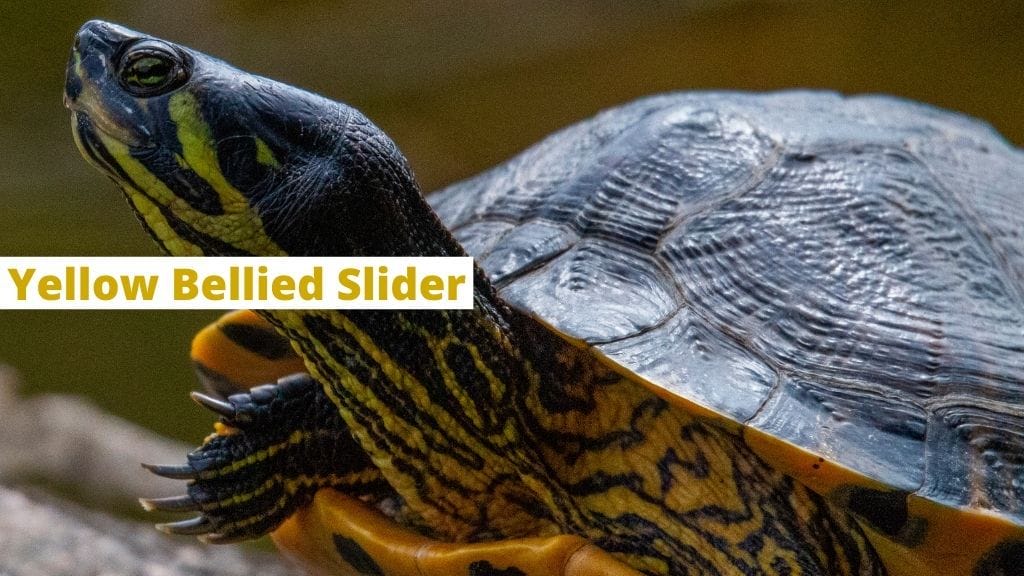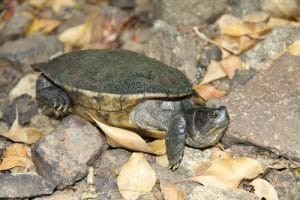Trachemys scripta scripta (Yellow-bellied slider)
Home > Turtle Database > Trachemys scripta scripta (Yellow-bellied slider)

The yellow-bellied slider is a freshwater turtle found in the southeastern United States. It’s known for its bright yellow markings and strong swimming ability. This turtle is often seen basking on logs or rocks in ponds and slow-moving rivers.
Native To These Regions
Florida (USA), Georgia (USA), North Carolina (USA), South Carolina (USA), Virginia (USA)Native Turtle Species Map – Find Turtles by Region
Scientific Classification
Kingdom: Animalia
Phylum: Chordata
Class: Reptilia
Order: Testudines
Family: Emydidae
Genus: Trachemys
Species: Trachemys scripta
Subspecies: Trachemys scripta scripta
Common Names
Yellow-bellied slider
Yellow-bellied terrapin
This Hilarious Turtle Book Might Know Your Pet Better Than You Do
Let’s be real—most turtle care guides feel like reading a textbook written by a sleep-deprived zookeeper.
This one’s not that.
Told from the snarky point of view of a grumpy, judgmental turtle, 21 Turtle Truths You’ll Never Read in a Care Guide is packed with sarcasm, sass, and surprisingly useful insights.
And hey—you don’t have to commit to the whole thing just yet.
Grab 2 free truths from the ebook and get a taste of what your turtle really thinks about your setup, your food choices, and that weird plastic palm tree.
It’s funny, it’s honest, and if you’ve ever owned a turtle who glares at you like you’re the problem—you’ll feel seen.
Identification
Description
It has an olive to brown upper shell with yellow stripes on its limbs, neck, and head. The lower shell is usually bright yellow with dark spots. A key feature is the bold yellow patch behind each eye.
Sexual Dimorphism
Males are smaller and have longer front claws and tails. Females grow larger with shorter claws and thicker bodies.
Check more turtles from the Trachemys genus
Native Origin and Distribution
Geographical Range
Native to the southeastern U.S., especially in states like South Carolina, Georgia, Florida, and Alabama. They’ve been introduced to other areas due to pet releases.
Preferred Habitat
They live in slow-moving freshwater like ponds, lakes, swamps, and streams. These turtles love basking and need sunny spots like logs or rocks near the water.
Behavior
Feeding Habits
Omnivorous. Juveniles eat mostly insects, fish, and tadpoles. Adults shift to a more plant-based diet but still eat small animals and carrion.
Predators
Eggs and hatchlings are eaten by raccoons, birds, fish, and snakes. Adults have fewer predators, but large birds and alligators may still pose a threat.
Reproduction
Breeding Season
Breeding begins in early spring and can continue into summer.
Reproductive Method
Females lay 2 to 3 clutches per year, with 5 to 20 eggs per clutch. Eggs are laid on land, and hatchlings emerge after about 2 to 3 months.
Conservation
Extinction Status
Not currently endangered.
Threats
Habitat loss, pollution, road deaths, and being captured for the pet trade. Also face problems from invasive species and disease.
Conservation Measures
Protected in some states. Public education and habitat conservation help maintain their numbers.
Economic Importance
Popular in the pet trade. Also help control insect populations in the wild. Sometimes seen as pests when introduced to non-native habitats.
Interesting Facts
- They can live over 30 years in captivity.
- In cold areas, they brumate (a form of hibernation) during winter.
- They often stack on top of each other when basking.

About Author
Muntaseer Rahman started keeping pet turtles back in 2013. He also owns the largest Turtle & Tortoise Facebook community in Bangladesh. These days he is mostly active on Facebook.














